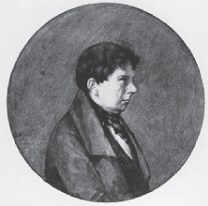پنجشنبه, ۲۱ اسفند ۱۳۹۳، ۱۱:۴۷ ب.ظ
Georg Simon Ohm and Resistance

ONE OF THE FUNDAMENTAL RELATIONSHIPS of circuit theory is that between voltage, current, and resis-tance. This relationship and the properties of resistance were investigated by the German physicistGeorg Simon Ohm (1787–1854) using a circuit similar to that of Figure 3–1. Working with Volta’s recently developed battery and wires of different materials, lengths, and thicknesses, Ohm foundthat current depended on both voltage and resistance. For a fixed resistance, he found that dou-bling the voltage doubled the current, tripling the voltage tripled the current, and so on. Also, for afixed voltage, Ohm found that the opposition to current was directly proportional to the length ofthe wire and inversely proportional to its cross-sectional area. From this, he was able to define theresistance of a wire and show that current was inversely proportional to this resistance; that is,when he doubled the resistance, he found that the current decreased to half of its former value.These two results when combined form what is known as Ohm’s law. Ohm’s results are of such fundamental importance that they represent the real beginnings of what we now call electrical circuit analysis.
 ۰
۰
 ۰
۹۳/۱۲/۲۱
۰
۹۳/۱۲/۲۱